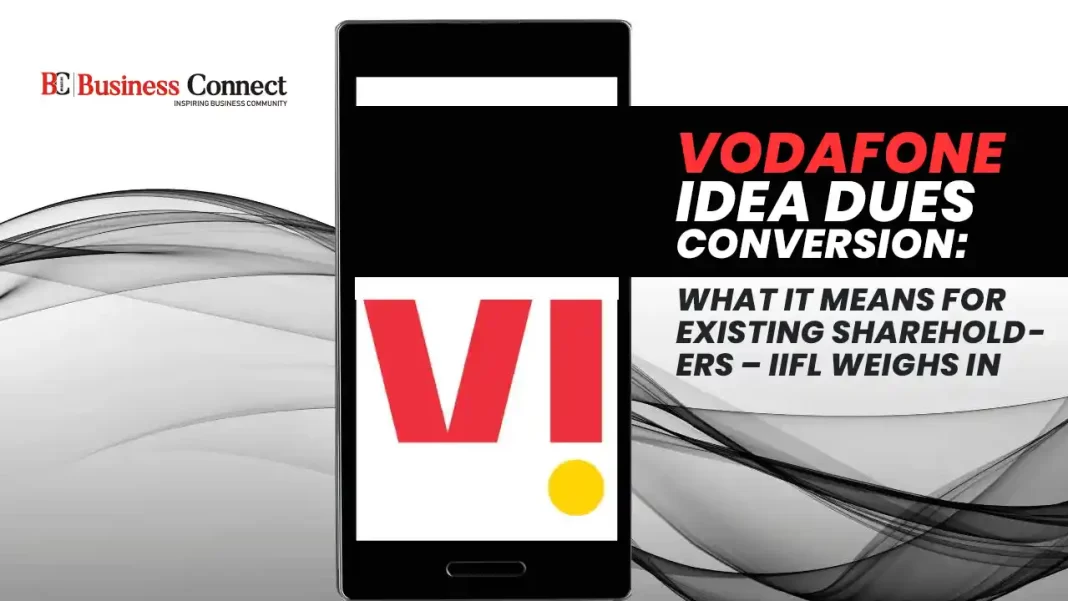Vodafone Idea Ltd. (VI), India’s third-largest telecom operator, has once again made headlines as the government approved the conversion of ₹36,950 crore in spectrum auction dues into equity on March 30, 2025. This move, increasing the government’s stake in the company from 22.6% to 48.99%, offers a critical lifeline to the debt-laden telco. However, a recent analysis by IIFL Securities suggests that while this step eases immediate financial pressures, it could spell significant challenges for existing shareholders, raising questions about dilution and long-term value.vodafone share price.
Vodafone Idea Dues Conversion: What It Means for Existing Shareholders – IIFL Weighs In
The decision, part of the government’s telecom relief package introduced in September 2021, follows an earlier conversion of ₹16,133 crore in interest dues into equity in February 2023. With this latest transaction, VI will issue 3,695 crore equity shares to the government at ₹10 per share—a 47% premium over its March 28 closing price of ₹6.81. The stock surged 10% to hit its upper circuit limit of ₹7.48 on April 1, reflecting initial market optimism. Yet, beneath the surface, IIFL’s analysis paints a more complex picture for VI’s existing investors.
A Double-Edged Sword
IIFL Securities views the dues conversion as a short-term boon for Vodafone Idea, reducing its cumulative government payouts over FY26-28 by approximately ₹40,000 crore to ₹75,000 crore. This relief enhances VI’s near-term cash flow, potentially paving the way for the company to secure a long-anticipated ₹25,000 crore debt funding package. “The improved liquidity and government backing could be a game-changer for VI’s survival,” noted IIFL in its report. The brokerage also highlighted that this move supports India’s telecom sector by preventing a duopoly dominated by Reliance Jio and Bharti Airtel.
However, the benefits come at a steep cost for existing shareholders. The issuance of new shares significantly dilutes their ownership. Prior to this conversion, promoters Vodafone Group and Aditya Birla Group held a combined 50.36% stake, with public shareholders owning the rest. Post-conversion, the government emerges as the largest single shareholder at 48.99%, while promoter holding drops to roughly 33%, further eroding the influence of existing investors. IIFL estimates that if all of VI’s outstanding dues were hypothetically converted, the government’s stake could climb to 81%, leaving little room for current shareholders.
Shareholder Value Under Pressure
The dilution effect has sparked concerns about the stock’s upside potential. IIFL Securities maintained its “Reduce” rating on VI, setting a price target of ₹4—implying a potential downside of over 40% from its April 1 closing price of ₹7.48. “The continued dilution caps the upside for existing investors,” the brokerage warned, pointing to VI’s persistent operational challenges. Despite the cash flow relief, VI’s free cash flow remains insufficient to cover looming regulatory payouts of ₹18,600 crore in FY26, ₹23,600 crore in FY27, and ₹33,100 crore in FY28, according to IIFL’s projections.
Analysts at IIFL also underscored VI’s struggle to compete with Jio and Airtel, which continue to gain market share. “Even with tariff hikes and lower capex assumptions, VI’s underlying free cash flow of negative ₹4,100 crore in FY27 falls short of its obligations,” the report stated. For shareholders, this raises the specter of further equity injections or additional dilution down the line, especially if VI fails to stabilize its subscriber base and boost its average revenue per user (ARPU) significantly.
Market Sentiment and Expert Views
The market’s initial euphoria—evidenced by Tuesday’s stock surge—contrasts with the cautious tone from experts. “This is a necessary step for VI’s survival, but it’s a bitter pill for shareholders,” said Jayesh Bhanushali, AVP of Research at IIFL Securities. “The government’s increased stake might stabilize the company, but it dilutes the value of existing investments to near-negligible levels in some scenarios.” Among the 21 analysts tracking VI, 11 recommend “Sell,” while only five each suggest “Buy” or “Hold,” reflecting widespread skepticism about its long-term prospects.
Posts on X echoed this mixed sentiment, with some users hailing the conversion as a boost to telecom competition, while others flagged the dilution as a “nightmare” for shareholders. One user noted, “It’s a lifeline for VI, but at what cost to those who’ve held the stock through its struggles?”
What Lies Ahead?
For Vodafone Idea, the dues conversion buys time to address its ₹2.1 lakh crore debt burden and invest in network upgrades, such as 4G expansion and 5G rollout. Yet, IIFL warns that structural challenges—subscriber losses, inadequate capex, and fierce competition—persist. “Transforming VI into a sustainable telco requires ARPU to hit ₹380 by FY28, up from ₹163 in Q3 FY25,” the report emphasized, a tall order given current trends.
For existing shareholders, the road ahead is fraught with uncertainty. While the government’s involvement may signal stability, the dilution and VI’s fragile fundamentals suggest limited upside. As the telco navigates this pivotal moment, investors must weigh the promise of a turnaround against the reality of diminished stakes—a dilemma IIFL has laid bare in its sobering analysis.
Add Business Connect magazine to your Google News feed


